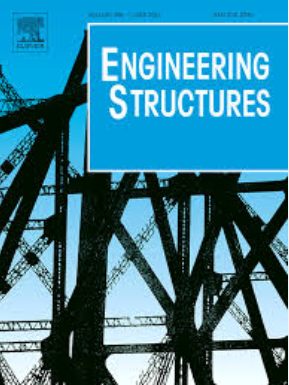Machine vision-based technology for the interface classification of precast concrete components
IF 5.6
1区 工程技术
Q1 ENGINEERING, CIVIL
引用次数: 0
Abstract
The interfaces of precast concrete components serve as connections between components. The quality of these interfaces affects not only the bonding strength between the components but also the seismic performance of the entire structure. Therefore, the quality of the interface construction is a crucial factor in ensuring the safety and longevity of engineering projects. To enhance the reliability and objectivity of the inspection results of interface quality, this study introduced machine vision technology and investigated intelligent inspection approaches for interface construction quality, achieving the identification of two hierarchical key targets: construction techniques and roughness grades. First, this study integrated a specialized detection device to collect substantial images in a constrained environment, establishing a stable dataset called the Concrete Techniques and Roughness (CTR) dataset. Second, this study employed a hierarchical Convolutional Neural Network (CNN) structure in which layers make predictions in the descending order of class abstraction based on prior knowledge. This allows the model to classify sequentially according to construction techniques and roughness grades. Additionally, considering the characteristics of interfaces, this study introduced the Fused Strip Pooling and Convolutional (FSPC) attention module as a feature fusion attention mechanism that enhances the ability of the model to focus on the crucial quality features of interfaces. The integration of hierarchical prior knowledge and attention mechanisms significantly improved the classification performance. This approach achieved an accuracy of 100 % for the construction techniques and 96.26 % for the roughness grades on the testing set of the CTR dataset. The results demonstrate that this method provides an effective solution for the application of machine vision in the quality inspection of precast concrete component interfaces.
求助全文
约1分钟内获得全文
求助全文
来源期刊

Engineering Structures
工程技术-工程:土木
CiteScore
10.20
自引率
14.50%
发文量
1385
审稿时长
67 days
期刊介绍:
Engineering Structures provides a forum for a broad blend of scientific and technical papers to reflect the evolving needs of the structural engineering and structural mechanics communities. Particularly welcome are contributions dealing with applications of structural engineering and mechanics principles in all areas of technology. The journal aspires to a broad and integrated coverage of the effects of dynamic loadings and of the modelling techniques whereby the structural response to these loadings may be computed.
The scope of Engineering Structures encompasses, but is not restricted to, the following areas: infrastructure engineering; earthquake engineering; structure-fluid-soil interaction; wind engineering; fire engineering; blast engineering; structural reliability/stability; life assessment/integrity; structural health monitoring; multi-hazard engineering; structural dynamics; optimization; expert systems; experimental modelling; performance-based design; multiscale analysis; value engineering.
Topics of interest include: tall buildings; innovative structures; environmentally responsive structures; bridges; stadiums; commercial and public buildings; transmission towers; television and telecommunication masts; foldable structures; cooling towers; plates and shells; suspension structures; protective structures; smart structures; nuclear reactors; dams; pressure vessels; pipelines; tunnels.
Engineering Structures also publishes review articles, short communications and discussions, book reviews, and a diary on international events related to any aspect of structural engineering.
 求助内容:
求助内容: 应助结果提醒方式:
应助结果提醒方式:


